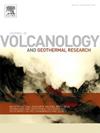全新世早期Pico de Orizaba火山强烈的爆发活动:重新审视Xilomich火山爆发事件
IF 2.3
3区 地球科学
Q2 GEOSCIENCES, MULTIDISCIPLINARY
Journal of Volcanology and Geothermal Research
Pub Date : 2025-09-04
DOI:10.1016/j.jvolgeores.2025.108433
引用次数: 0
摘要
Pico de Orizaba火山是一座位于跨墨西哥火山带最东端的更新世至全新世层状火山。在过去的650万年里,随着火山期到普林尼期的爆炸活动,穹窿生长和崩塌的反复循环发生了。这些火山喷发产生了一系列复杂的碎屑-火山灰、浮石-火山灰、块状-火山灰流和浮石沉降物,与安山岩到英安岩熔岩流相互交织,构成了现代火山大厦(citlalt本文章由计算机程序翻译,如有差异,请以英文原文为准。
Intense explosive activity in the early Holocene at Pico de Orizaba volcano: Revisiting the Xilomich eruptive episode
Pico de Orizaba is a Pleistocene to Holocene stratovolcano located in the easternmost part of the Trans-Mexican Volcanic Belt. Repeated cycles of dome growth and collapse, along with Vulcanian to Plinian explosive activity, have occurred during the past 650 ka. These eruptions have produced a complex sequence of scoria-and-ash, pumice-and-ash, block-and-ash flows and pumice fallout, interbedded with andesitic to dacitic lava flows that constitute the modern volcanic edifice (Citlaltépetl volcano). Based on detailed field descriptions, stratigraphic correlations, grain size and componentry analyses, and five new 14C radiocarbon ages, we reconstruct the eruptive history of the Xilomich eruptive episode deposited south of Pico de Orizaba. Our results indicate that at least ten pyroclastic flows were emplaced during the Xilomich eruptive episode between 8980 and 8170 years BP. These deposits record the occurrence of at least four Vulcanian eruptions and two dome-destruction events, which generated scoria-and-ash and block-and-ash pyroclastic flows. Pyroclastic flows generated by eruptions comparable to the Xilomich episode could extend as far as populated areas like Maltrata, Ciudad Mendoza, and Orizaba, located within a 30-km radius, posing a potential threat to approximately 310,500 inhabitants south of Pico de Orizaba.
求助全文
通过发布文献求助,成功后即可免费获取论文全文。
去求助
来源期刊
CiteScore
5.90
自引率
13.80%
发文量
183
审稿时长
19.7 weeks
期刊介绍:
An international research journal with focus on volcanic and geothermal processes and their impact on the environment and society.
Submission of papers covering the following aspects of volcanology and geothermal research are encouraged:
(1) Geological aspects of volcanic systems: volcano stratigraphy, structure and tectonic influence; eruptive history; evolution of volcanic landforms; eruption style and progress; dispersal patterns of lava and ash; analysis of real-time eruption observations.
(2) Geochemical and petrological aspects of volcanic rocks: magma genesis and evolution; crystallization; volatile compositions, solubility, and degassing; volcanic petrography and textural analysis.
(3) Hydrology, geochemistry and measurement of volcanic and hydrothermal fluids: volcanic gas emissions; fumaroles and springs; crater lakes; hydrothermal mineralization.
(4) Geophysical aspects of volcanic systems: physical properties of volcanic rocks and magmas; heat flow studies; volcano seismology, geodesy and remote sensing.
(5) Computational modeling and experimental simulation of magmatic and hydrothermal processes: eruption dynamics; magma transport and storage; plume dynamics and ash dispersal; lava flow dynamics; hydrothermal fluid flow; thermodynamics of aqueous fluids and melts.
(6) Volcano hazard and risk research: hazard zonation methodology, development of forecasting tools; assessment techniques for vulnerability and impact.

 求助内容:
求助内容: 应助结果提醒方式:
应助结果提醒方式:


